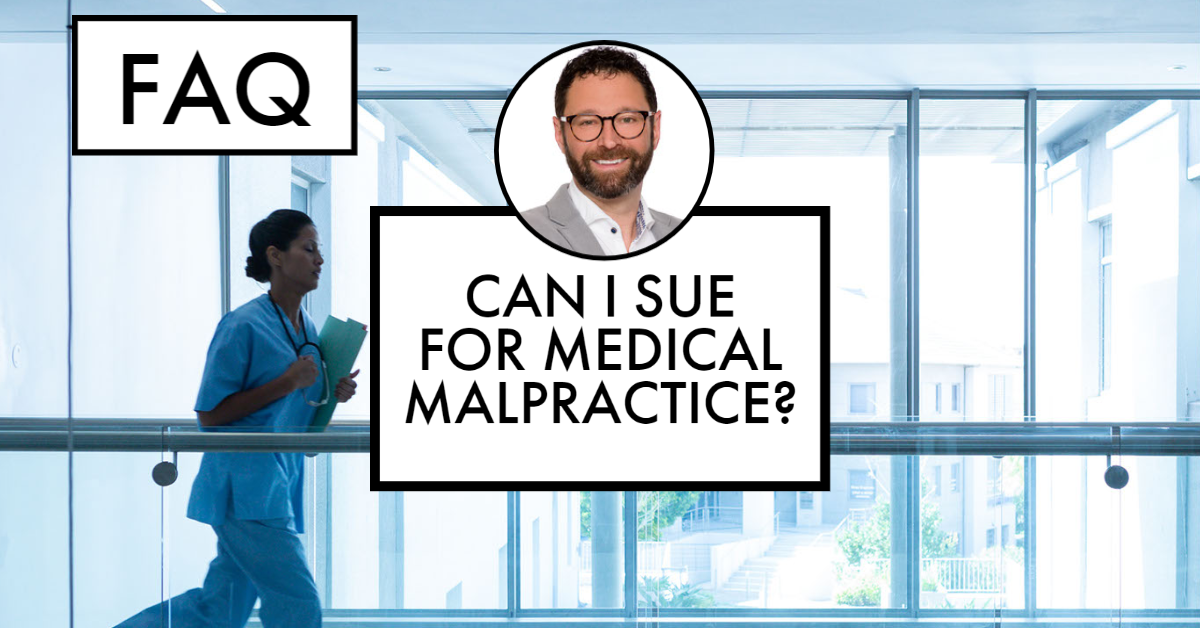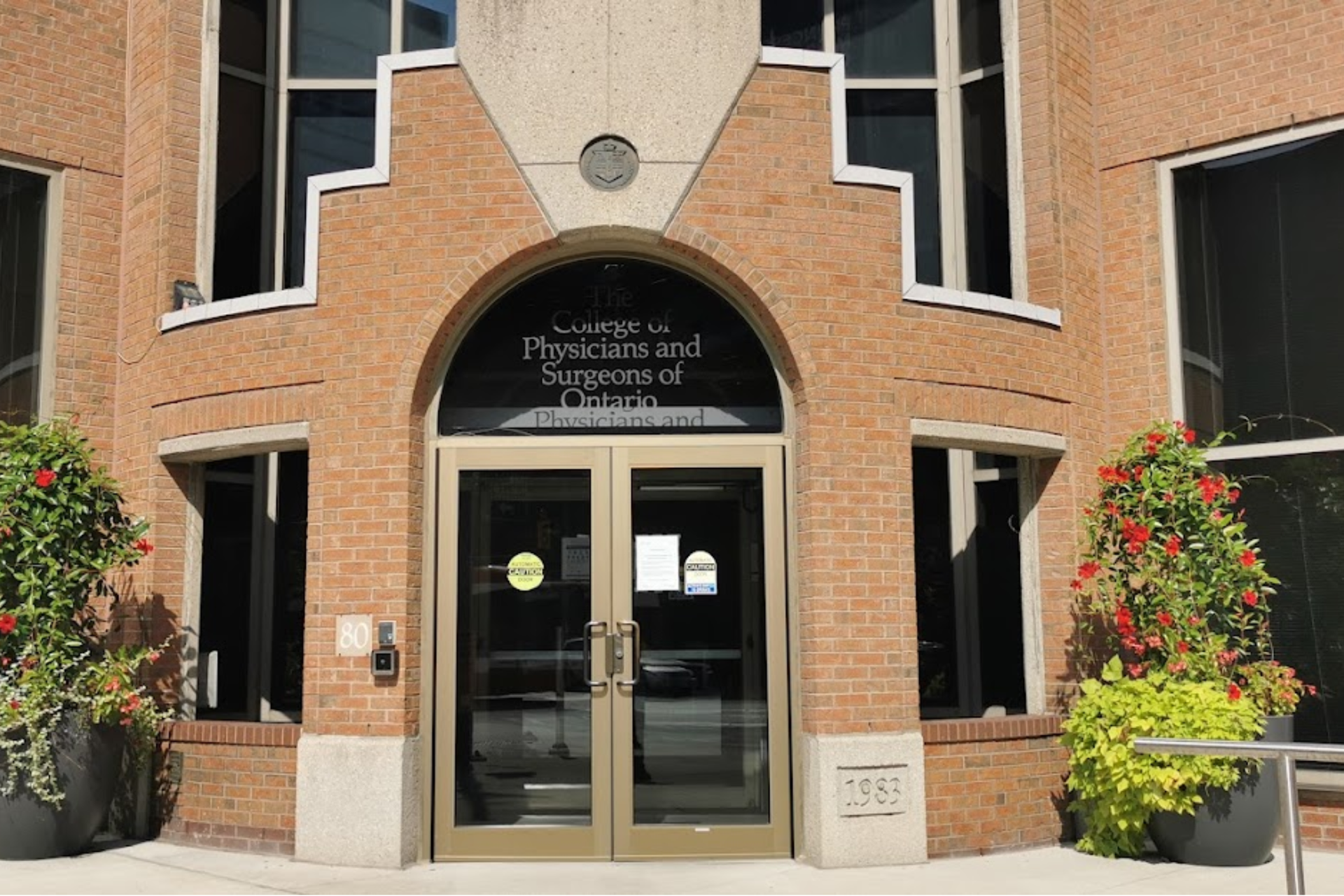
Ishac v Ontario (Health Insurance Plan) – Pectoral Implant Removal Not Covered by OHIP
In Ontario, the line between an insured health service and an elective cosmetic procedure can sometimes seem blurry. The Ontario Health Insurance Plan (OHIP) is

After nearly two decades of litigating medical malpractice claims in Ontario, this is by far the most common question I am asked when speaking with potential new clients. In this post, you will find the legal information that I routinely share almost daily as a medical malpractice lawyer, which consists of the following topics:
Under the laws of Ontario (and most other common-law jurisdictions), individuals who are injured by the fault of another can sue for financial compensation. The financial consequences to a person and their family as a result of serious injury or death can be devastating. Imagine you were no longer able to earn an income to support your family? What if your parent, child, or spouse needed constant attendant care because they could not perform normal activities of daily living on their own?

The burden on the family and individual can be enormous. In very broad terms, there are three categories of financial compensation to which a person injured by the fault of another may be legally entitled to claim:
Unlike motor vehicle accident claims where most policy limits are $1 million, physicians have no limit to the amount of indemnity offered to them through the Canadian Medical Protective Association (“CMPA”). Certainly, this is some positive news for those harmed by medical malpractice and who may have multi-million dollar claims. However, unlike an insurance company, the CMPA is a mutual medical defence organization for Canadian physicians. It exists to protect the professional integrity of physicians. It does not exist to pay out claims in the most cost effective manner to sympathetic people harmed through the medical system.
For this reason, medical malpractice claims in Canada are vigorously defended by a well-funded and sophisticated organization that is primarily motivated to protect the reputation of physicians. Compensation to victims of medical malpractice is only offered in the clearest of cases. Where there is some prospect of a successful defence on behalf of the physician, a patient harmed by medical malpractice will often have to choose between going to trial or abandoning their claim as there will be no offer to settle.
It is important, therefore, to understand the basic legal requirements to successfully prove a medical malpractice claim.
It is expected that any claim against a physician will be met with strong resistance. The prospect of going to trial (and losing) is a real concern. As such, it is essential that you understand what the law requires for you to successfully prove a medical malpractice claim.

There is an important legal distinction between “bad care” and medical malpractice. I very often believe and accept a potential client’s complaint that the care they received was poor. Unfortunately, that may not be enough to prove medical malpractice in the legal sense.
The most important elements of proving negligence in a medical malpractice claim are standard of care, causation and damages.
So, how do you prove standard of care, causation and damages? You prove it through expert evidence. This means your lawyer must find reputable and qualified physicians to provide opinion evidence that supports your position that the negligent doctor’s actions (or inactions) fell below accepted standards of practice which caused harm and compensable damages. At a minimum one expert per element of negligence will be required and often more.
Medical experts do not provide their services for free (nor do lawyers), and therefore the financing of a medical malpractice claim is important to understand.
Fortunately contingency fee agreements are legal in Ontario. There was a time when they were not. Contingency fee agreements provide access to justice to deserving litigants who simply could never afford to finance risky litigation. The risk of non-recovery is shouldered by the lawyer or law firm so that the deserving client of legal representation can access the justice system without paying upfront legal fees.
However, that does not mean that there is no cost to the litigation. It is, in fact, extremely costly to litigate these claims for number of reasons:
Understanding that medical malpractice claims are expensive to litigate with a relatively low prospect of settlement means that lawyers and law firms may decline representation to a patient even though a medical mistake clearly happened. Why? Usually because there is no clear connection between the mistake and the harm, or the harm caused is not significant enough to cover the legal costs of litigation. Sadly, this means that sometimes patients of advanced age or with complex medical histories cannot be assisted for economic reasons.
This, however, does not mean that there is no recourse for people who believe they have experienced a medical error. There is always the option of making formal complaints to the regulatory bodies of health professionals and/or the hospital. This will not result in financial compensation since monetary remuneration is reserved only for litigants who can prove significant harm caused by substandard medical care.
The College of Physicians and Surgeons of Ontario (“CPSO”) regulates the practice of medicine in Ontario.

The CPSO will investigate a complaint against a physician made by the public. The complaint process is started by submitting a complaint online. The CPSO will assign an investigator to obtain medical records, a response from the physician, and occasionally an independent expert report (particularly where the CPSO feels it lacks expertise to decide the matter).
With the above information, the Inquiries, Complaints and Reports Committee (the “Committee”) of the CPSO will conduct a review in private and will deliver a written Decision and Reasons summarizing the care received by the patient, the areas of concern, and their view as to whether there are any demonstrable competency issues that may require remedial or disciplinary action. The process from complaint to decision typically takes 8 – 12 months.
Similarly, you may make a complaint against a nurse to the College of Nurses of Ontario. A complaint against a nurse in Ontario may be submitted online. The investigation process is similar to the CPSO. All regulated health professionals have their own colleges with complaint processes that are readily available to the public to access.
In addition, all hospitals have a patient relations office where you may lodge a complaint. Please direct yourself to the specific hospital website for further details.
Keep in mind, however, that physicians are independent contractors to hospitals, and although a hospital may internally investigate a complaint made against a physician, it does not have the jurisdiction to discipline a negligent physician. Also, the disclosure requirements of a hospital complaint is different and it is unlikely that you will receive any written acceptance of wrongdoing, although in some cases you may be informed that certain changes have been made to prevent the incident that happened to you from happening again.
I generally recommend that patients pursue complaints if they believe there was medical malpractice. For the safety of other patients it is always best to bring to light concerns in medical management.
For a more detailed post on CPSO complaints, please read here.
A regulatory or hospital complaint will not extend a limitation period to sue if a lawsuit for compensation is your ultimate objective. As such, it is extremely important to be aware that lawsuits against physicians and hospitals must be commenced within the applicable limitation period otherwise the claim may be statute barred.
The law requires individuals who have been harmed by the fault of another to bring forward a claim within a reasonable length of time. The rationale behind this rule is that as time passes it can become more difficult for doctors to defend a claim against them as memories fade and documents are lost. Prejudice is presumptively caused by the inordinate passage of time.
In Ontario, the limitation period to sue a doctor, hospital, nurse or other health care professional is two years. This means that your lawsuit must be issued by the Ontario Superior Court of Justice before the two year anniversary of the medical malpractice incident, otherwise your claim will be statute barred.
Medical malpractice claims are much different than your typical personal injury claim, such as a motor vehicle accident or slip and fall. In those cases, it is clear and obvious as to when the incident arose thereby making the determination of the limitation period straightforward.
With respect to medical malpractice claims, the patient may be unaware of the incident until some time later. It could be days, weeks, months or years. For this reason, the doctrine of discoverability may apply to the commencement of the two year limitation period. This means that the limitation period only starts to run from when the patient knew, or reasonably should have known, the material facts upon which to base a claim.
The doctrine of discoverability is best explained with a few examples:
In cases of birth injury, or medical malpractice involving a child, the limitation period will not run against the child until they reach the age of majority, which is 18 years old in Ontario. Since children are incapable of retaining and instructing a lawyer, they cannot have a limitation period run against them. The same rule applies to mentally incapable persons.
The determination of a limitation period in a medical malpractice claim is not always straightforward. If you suspect medical malpractice, the best course of action is to promptly obtain legal advice. If you wait too long, most lawyers will not be able to assist you given the uphill battle you will face trying to bring a claim that may be barred by reason of an expired limitation period.

In Ontario, the line between an insured health service and an elective cosmetic procedure can sometimes seem blurry. The Ontario Health Insurance Plan (OHIP) is

On February 11, 2019, Bradley McKee stabbed his father, William McKee, to death. At the time of the stabbing, Bradley was 27 years old; he